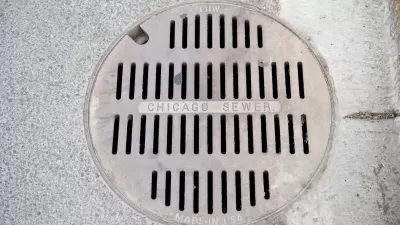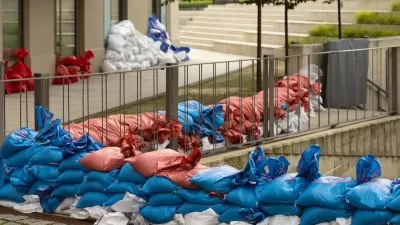Cities like Philadelphia and Boston are at higher risk of sewage overflows due to their aging sewer systems and rising sea levels.

U.S. cities with combined sewer systems risk having those systems overwhelmed during flooding, leading to the release of untreated sewage, according to an article in Eurasia Review.
Combined sewer systems collect stormwater and sewage using the same pipes, discharging their contents at wastewater treatment plants. “But the pipes can only convey a certain amount of flow. During wet weather events, to avoid inundating the wastewater treatment plants some portion of the flow still overflows into the natural water bodies through features known as combined sewer overflows – or CSOs.”
While cities are working to upgrade their infrastructure and limit CSOs, “As climate change brings more heavy rain and higher river levels, the problem worsens and cannot be mitigated with conventional approaches to stormwater management.”
A group of researchers from Drexel University studying Camden, New Jersey created climate models to simulate future flooding and CSOs in the city and evaluate the effectiveness of potential interventions. Using the model, researchers found that a proposal to divert upstream stormwater away from its sewer system could help reduce CSOs. “Overall, the results suggest that increased precipitation events due to climate change will cause more combined sewer overflows. And sea level rise will make it more difficult for these systems to discharge into nearby bodies of water.”
FULL STORY: Climate Change And Sea Level Rise Pose An Acute Challenge For Cities With Combined Sewer Systems

Alabama: Trump Terminates Settlements for Black Communities Harmed By Raw Sewage
Trump deemed the landmark civil rights agreement “illegal DEI and environmental justice policy.”

Planetizen Federal Action Tracker
A weekly monitor of how Trump’s orders and actions are impacting planners and planning in America.

Why Should We Subsidize Public Transportation?
Many public transit agencies face financial stress due to rising costs, declining fare revenue, and declining subsidies. Transit advocates must provide a strong business case for increasing public transit funding.

Understanding Road Diets
An explainer from Momentum highlights the advantages of reducing vehicle lanes in favor of more bike, transit, and pedestrian infrastructure.

New California Law Regulates Warehouse Pollution
A new law tightens building and emissions regulations for large distribution warehouses to mitigate air pollution and traffic in surrounding communities.

Phoenix Announces Opening Date for Light Rail Extension
The South Central extension will connect South Phoenix to downtown and other major hubs starting on June 7.
Urban Design for Planners 1: Software Tools
This six-course series explores essential urban design concepts using open source software and equips planners with the tools they need to participate fully in the urban design process.
Planning for Universal Design
Learn the tools for implementing Universal Design in planning regulations.
Caltrans
Smith Gee Studio
Institute for Housing and Urban Development Studies (IHS)
City of Grandview
Harvard GSD Executive Education
Toledo-Lucas County Plan Commissions
Salt Lake City
NYU Wagner Graduate School of Public Service





























